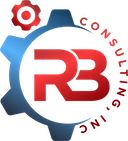When defining ROI for a project, we must ensure that the changes we make are a step in the right direction. In some situations, adding a feature or even a new solution is a step backward. We can run into this when there is shiny new technology or some buzzword we hear and decide to embrace. These projects are more about “keeping up with the Joneses” than improving our bottom line. That may seem simple to avoid. However, it is common for a business to dive into a project without fully understanding the costs and rewards.
Defining ROI By Assessing Our Current Situation
We often return to a “why” and the details around the problem we are solving. This question is another one that requires us to examine our current situation. Our efforts at defining ROI must be based on an accurate baseline. That can only be done by assessing where we are and its costs. Once again, we struggle to create a solution when we have not adequately defined the current process. In this case, we go one step further and assess the related costs. The costs and benefits of the current situation can fall into several categories.
- Monetary
- Time
- Morale, Frustration
- Quality
- Training/Side Effects
The Monetary Cost
This cost is a common facet of defining ROI. We can see hard numbers from license fees or other line items tied to one-time or recurring payments. It is an area with a lot of black and white, so we are comfortable using it as part of our return on investment calculations. However, there can be hidden or tangential costs to software. We might need to pay for maintenance, adjust for overages, or purchase other items as part of this cost. For example, a solution might require that we have a laptop for each employee. While that may seem a part of doing business, it might not be correct. A different solution might allow employees to have a lower-cost device without losing productivity.
Time – The Master Thief
Time is the hardest part of defining ROI. We can quickly lose a lot of time in small amounts throughout the day. A good example is the time spent checking e-mails. This task can seem like a short and inconsequential part of our day, but it adds up. That same challenge in assessing time spent on tasks occurs throughout the business. Even worse, there are side effects that can eat into our productivity. For example, a report that takes five minutes to execute may be an excuse for the employee to run and grab a cup of coffee. While that is not an issue, the time spent is. That short run to grab coffee may average ten minutes away from work. That turns the five-minute report into a ten-minute actual cost. While this example is a micro-managing of time issue, it is not irrelevant. We often spend more time around a task than we realize when you include pre and post-time that are directly linked to the job.
Morale and Frustration – The Silent Killers
Time and money can be relatively easy to assess as costs for a task. On the other hand, frustration and an impact on morale are hard to define. These vary from employee to employee in many cases. They also are intangibles that are hard to quantify while still being critical components of productivity. The best way to measure these areas is to talk to the users most impacted by the problem and solution. You can try open-ended and theoretical questions like, “What would you do if this took half as much time or if it was not part of your day?” This assessment is complex. However, the pay-off can be substantial as it helps you get a sense of the real problem within the problem. Do not underestimate the need to incorporate satisfaction and frustration into your ROI for a solution. You can even float trial balloon solutions to see if you are genuinely improving the current situation.
Quality
There are some enhancements we make that are pure quality plays. For example, we can reduce data entry errors and add new checks, validations, or other features that make our organization produce a better product or service. However, these cost factors can oppose satisfaction as it sometimes slows production speed in the short run, even while improving overall productivity through fewer support calls or returns. In some cases, this factor may also be considered a cost of doing business. For example, there might be a compliance need to work in a way that impacts quality or security. We may prefer not to do things this way, yet we are forced to. That falls into that category of being a cost of doing business.
Quality is another area that is not always easy to measure. It can be subjective and evasive in tying it to the bottom line. However, there are not many customers that search for low-quality or shoddy products. Therefore, we need to make it a factor in everything we do and every solution we assess.
Training And Side Effects
A little-known or considered area of defining ROI is how a solution can impact employee training and understanding. In the same way, there can be positive and negative side effects of a process or solution that we need to consider. For example, automation is often seen as a positive step for any problem. It has benefits that include speed and reducing potential errors. However, it can sometimes hide implementation details and other specifics that are good for employees to know.
One of the best examples I have come across is the idea of customer interaction. In many situations, we can use technology to streamline common customer touchpoints, including support, orders, and even complaints. These can be areas that save a lot of time and reduce costs. However, the lack of a “personal touch” can also be off-putting. We all have those times when we want to speak to a human being. No amount of voice menu intelligence can replace the ability of a human to provide context, empathy, or even sympathy when that is what the customer truly wants. There are also outlier situations that never seem adequately handled by a process or automation. These unique situations can be a make-or-break moment with a customer. These are the times we want to take that extra time and provide a custom solution rather than the best automation we can come up with.
Signing Off On This Question
This question can be simplified down to a pros and cons list or something similar. First, we must be clear on the benefits of the solution we are looking for or proposing. Likewise, we want to be clear on the potential downsides of our new approach. The knowledge of the pros and cons and clearly communicating them can be instrumental in building the best solution for our situation.
Improve Software Success
We have an e-book that can help you explore all the steps in building software, including a few templates. However, we ask that you share an e-mail address so we can send you a copy. We add you to our monthly newsletter, but you can unsubscribe anytime. Your data is not shared with anyone else. Learn more about our book here.




